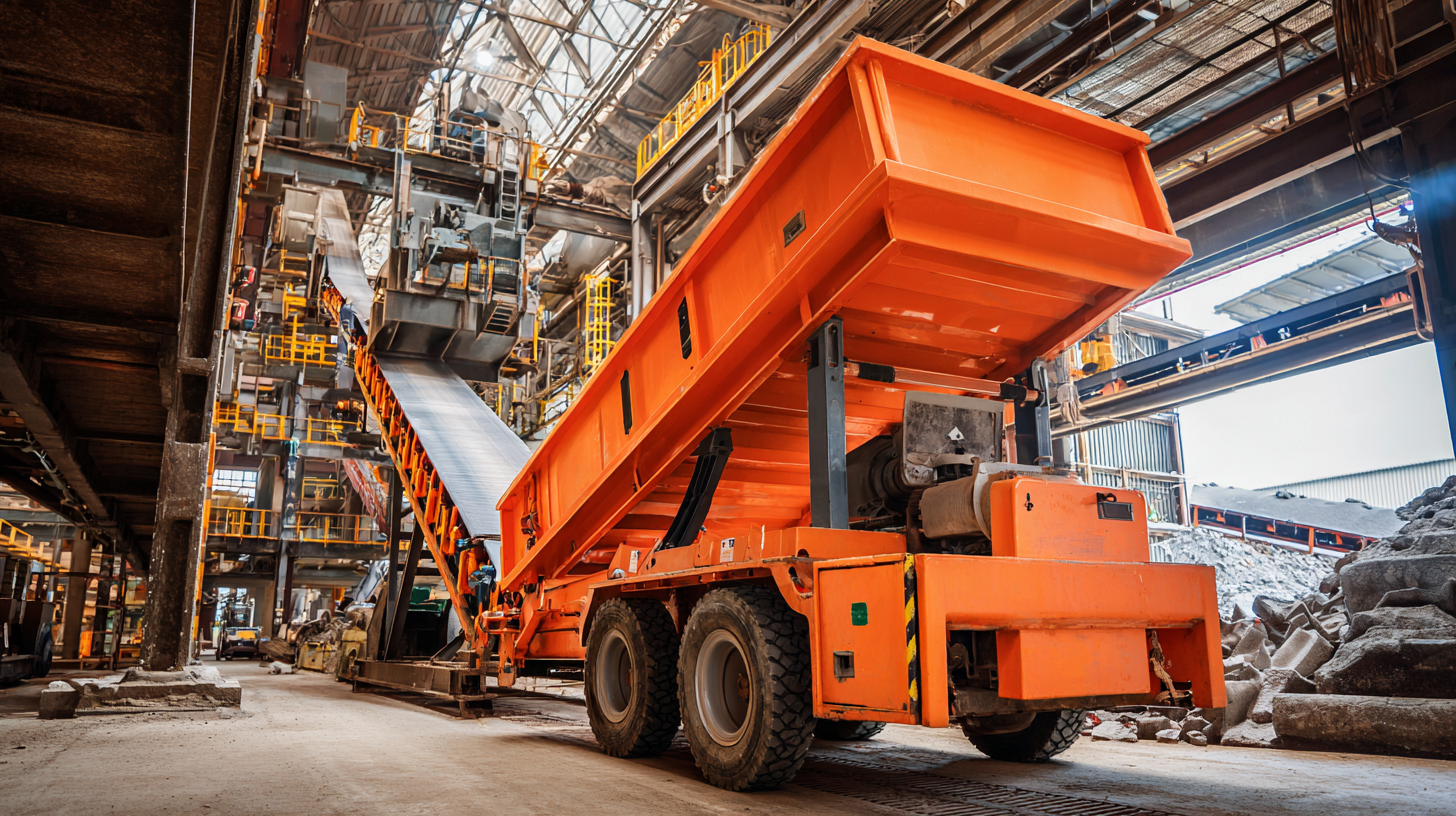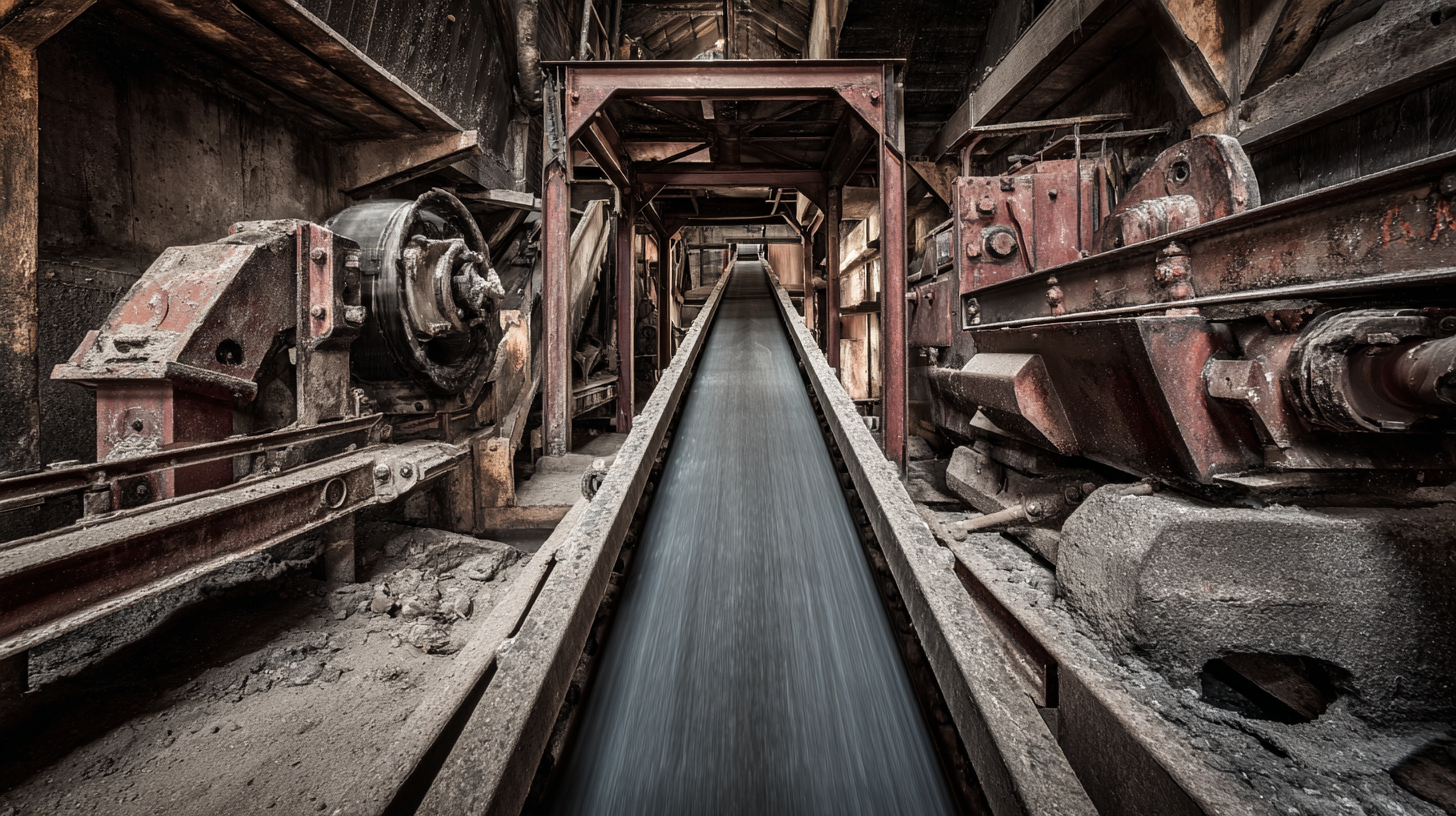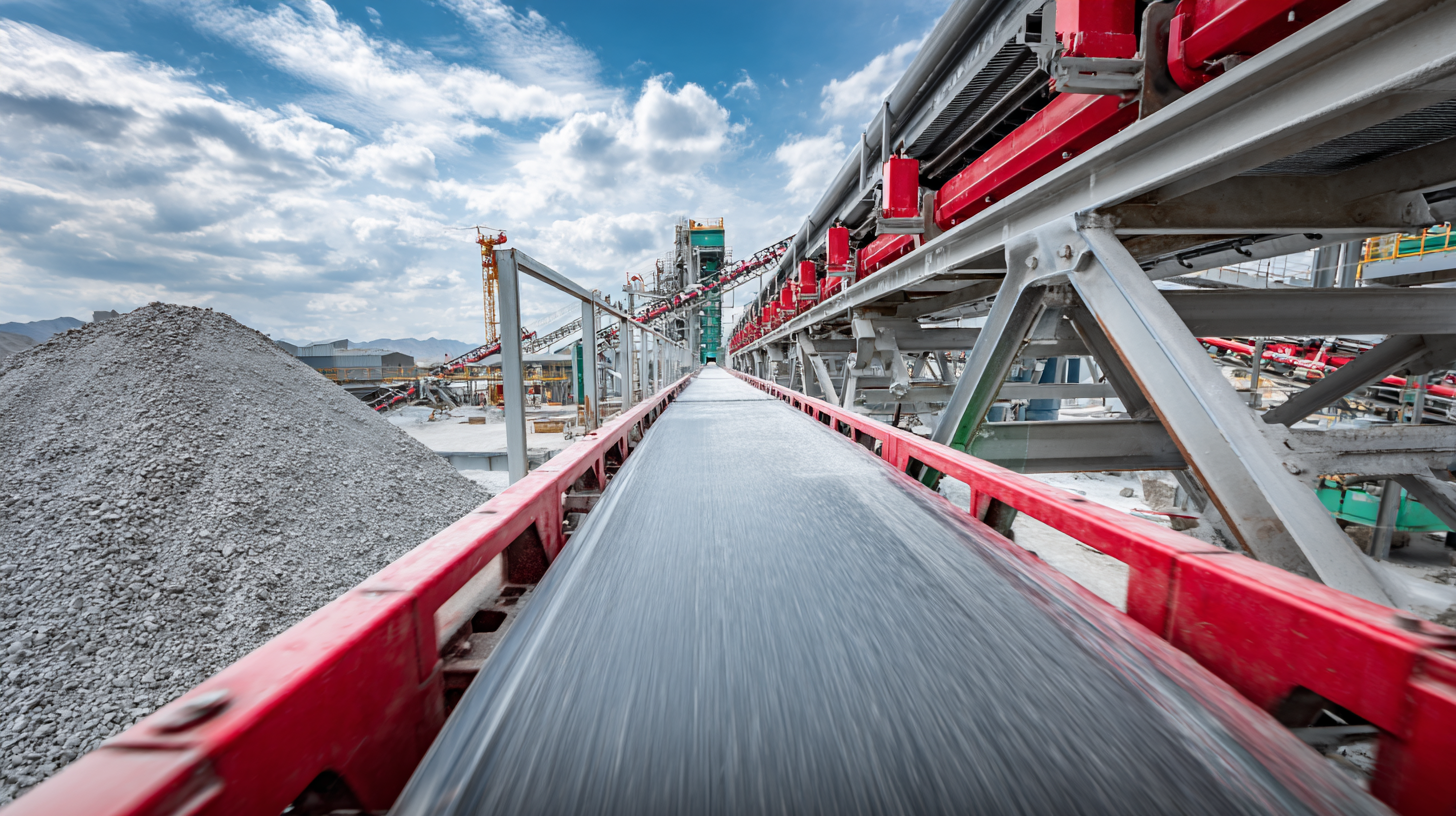The manufacturing and handling of materials in various industries often face significant challenges, particularly in terms of efficiency and safety. The introduction of advanced technologies, such as the Cutting Conveyor Belt With Grinder, has revolutionized the way companies address these issues. According to a recent report by Grand View Research, the global conveyor system market is expected to reach USD 10 billion by 2027, highlighting the increasing importance of optimizing material handling processes.

The cutting conveyor belt enhances productivity with its ability to seamlessly integrate grinding solutions, allowing for precise cutting and finishing of materials on the move. As industries continue to evolve, understanding the unique features and suitable applications of cutting conveyor belts will be crucial. This blog delves into the various types of products available in the market and their respective advantages, equipping businesses with the knowledge to overcome operational hurdles effectively.
 In challenging environments, cutting conveyor belts play a pivotal role in ensuring operational efficiency and safety. Their design must withstand harsh conditions, whether in mining, textile production, or recycling. The integration of advanced technology, such as PLC-based laser scanning systems, ensures precise monitoring of belt surfaces, reducing downtime and maintenance costs. This technology enhances productivity by addressing potential issues before they escalate.
In challenging environments, cutting conveyor belts play a pivotal role in ensuring operational efficiency and safety. Their design must withstand harsh conditions, whether in mining, textile production, or recycling. The integration of advanced technology, such as PLC-based laser scanning systems, ensures precise monitoring of belt surfaces, reducing downtime and maintenance costs. This technology enhances productivity by addressing potential issues before they escalate.
Tips for Choosing the Right Cutting Conveyor Belt:
1. Material Compatibility: Select a belt material suitable for the specific environment, considering factors such as temperature, chemical exposure, and load weight.
2. Belt Thickness and Design: Ensure the belt's thickness and overall design match the demands of the intended application, focusing on durability and resistance to wear and tear.
3. Regular Maintenance: Implement a routine maintenance schedule to monitor wear and performance, which can significantly extend the life of the conveyor belt and improve overall system reliability.
By investing in the right cutting conveyor solutions, industries can overcome the myriad challenges presented by their operating environments, keeping productivity high and costs manageable.
When selecting high-quality cutting conveyor belts, certain key features can significantly enhance their performance and longevity. First, consider the material composition of the belt, as it directly impacts durability and resistance to wear. A reliable cutting conveyor belt should be constructed from high-strength, abrasion-resistant materials that can withstand the rigors of grinding and cutting processes. Additionally, the belt's flexibility is crucial; a belt that maintains structural integrity while allowing for smooth movement can greatly improve operational efficiency.
Another essential feature to look for is the surface texture of the conveyor belt. Optimized surfaces can provide better grip and facilitate the movement of materials, reducing the risk of slippage. This is particularly important in environments where precision cutting is vital. Furthermore, ensure that the belt is designed for easy maintenance, with features that allow for quick replacement and less downtime. By focusing on these key attributes—material strength, surface texture, and ease of maintenance—industries can effectively overcome challenges associated with cutting processes and enhance productivity.
 In the fast-paced world of manufacturing and material handling, efficiency is paramount. Innovative grinder solutions are transforming the capabilities of cutting conveyor belts, providing a significant boost in performance and productivity. By integrating advanced grinding technology into conveyor systems, businesses can streamline their operations, ensuring that even the toughest materials are processed with precision and speed. This not only minimizes downtime but also enhances the overall workflow, allowing for seamless transitions between cutting, grinding, and transporting.
In the fast-paced world of manufacturing and material handling, efficiency is paramount. Innovative grinder solutions are transforming the capabilities of cutting conveyor belts, providing a significant boost in performance and productivity. By integrating advanced grinding technology into conveyor systems, businesses can streamline their operations, ensuring that even the toughest materials are processed with precision and speed. This not only minimizes downtime but also enhances the overall workflow, allowing for seamless transitions between cutting, grinding, and transporting.
The incorporation of these grinder solutions offers several advantages beyond mere efficiency. For instance, they reduce the wear and tear on equipment, extending the lifespan of both the conveyor belts and grinding apparatuses. Moreover, modern grinder designs focus on maximizing power while minimizing energy consumption, leading to cost-effective operations that benefit both the environment and the bottom line. As industries continue to evolve, the adoption of cutting-edge grinder technologies stands as a testimony to the commitment to excellence and innovation in today’s manufacturing landscape.
When working with cutting conveyor belts, it’s not uncommon to encounter issues that can hinder productivity. Understanding common challenges is the first step in effective troubleshooting.
One prevalent problem is slippage, often caused by improper tension or surface wear. To resolve this, regular maintenance checks are crucial; ensuring the belt is properly tensioned and replacing any worn components can alleviate this issue significantly.
Another issue frequently faced is misalignment, which can lead to uneven wear and decreased efficiency. Misalignment often occurs due to improper installation or structural issues with the conveyor system.
Adjusting the pulleys and ensuring that the conveyor frame is level can help rectify this misalignment. Furthermore, utilizing cutting conveyor belts with integrated grinder solutions can enhance overall performance, as these solutions are designed to handle the rigors of cutting operations while minimizing wear and tear on the belt itself.
Lastly, contamination from dust and debris can cause significant disruptions in the functioning of cutting conveyor belts. Implementing regular cleaning schedules and using protective covers can help maintain cleanliness and extend the lifespan of the belts. By staying proactive and addressing these common issues, businesses can ensure smoother operations and enhance their overall productivity.
Maintaining the longevity and efficiency of conveyor systems is crucial in today’s fast-paced industrial environment. One of the best practices in conveyor maintenance is implementing preventive measures. According to industry research, up to 80% of equipment failures can be avoided with a robust preventive maintenance program. By utilizing technologies such as thermal imaging, operators can identify hidden equipment faults before they escalate into costly downtimes, thus ensuring continuous operation and safety in the workplace.
Additionally, innovations in conveyor belt technology have led to significant enhancements in wash speeds and the overall cleanliness of conveyor systems. Improved conveyor cleaning mechanisms reduce maintenance requirements and optimize operational efficiency. For example, studies indicate that effective cleaning practices can decrease downtime by as much as 20%. This proactive approach not only minimizes potential damage claims but also enhances employee and customer safety.
Implementing these best practices not only extends the lifespan of conveyor belts but also streamlines overall system performance, paving the way for greater productivity and cost savings in manufacturing processes.
